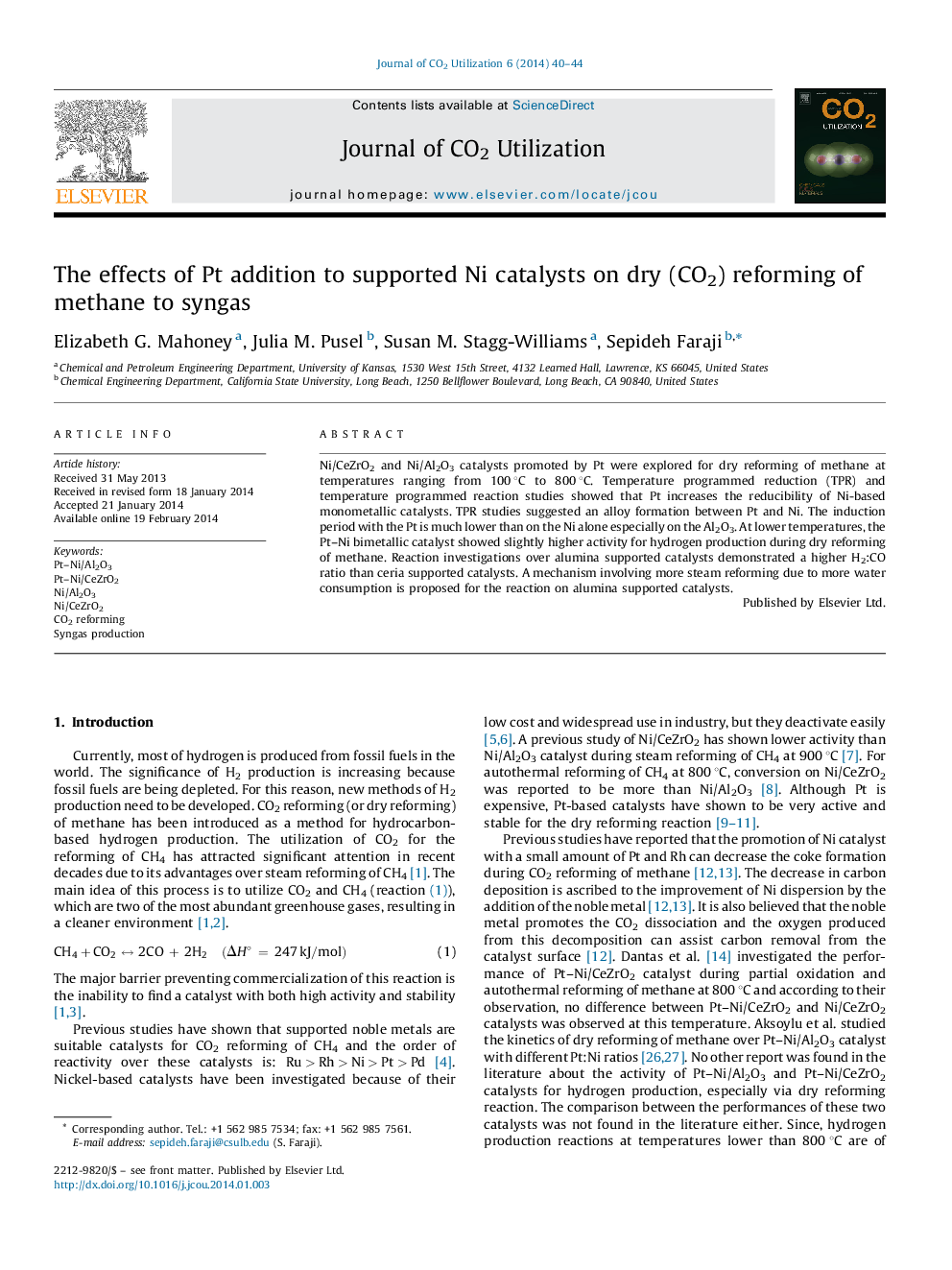| Article ID | Journal | Published Year | Pages | File Type |
|---|---|---|---|---|
| 63603 | Journal of CO2 Utilization | 2014 | 5 Pages |
•We studied two new bimetallic catalysts for hydrogen production from methane.•Pt–Ni catalyst showed more activity for hydrogen production at low temperature.•The addition of Pt to Ni increases the reducibility of Ni catalyst for H2 production.•Al2O3 supported catalyst showed a higher H2:CO ratio than ceria supported catalyst.
Ni/CeZrO2 and Ni/Al2O3 catalysts promoted by Pt were explored for dry reforming of methane at temperatures ranging from 100 °C to 800 °C. Temperature programmed reduction (TPR) and temperature programmed reaction studies showed that Pt increases the reducibility of Ni-based monometallic catalysts. TPR studies suggested an alloy formation between Pt and Ni. The induction period with the Pt is much lower than on the Ni alone especially on the Al2O3. At lower temperatures, the Pt–Ni bimetallic catalyst showed slightly higher activity for hydrogen production during dry reforming of methane. Reaction investigations over alumina supported catalysts demonstrated a higher H2:CO ratio than ceria supported catalysts. A mechanism involving more steam reforming due to more water consumption is proposed for the reaction on alumina supported catalysts.
Graphical abstractNi/CeZrO2 and Ni/Al2O3 catalysts promoted by Pt were explored for dry reforming of methane at temperatures ranging from 100 °C to 800 °C. Temperature programmed reduction (TPR) and temperature programmed reaction studies showed that Pt increases the reducibility of Ni-based monometallic catalysts. TPR studies suggest an alloy formation between Pt and Ni. The induction period with the Pt is much lower than on the Ni alone especially on the Al2O3. At lower temperatures, the Pt–Ni bimetallic catalyst showed slightly higher activity for hydrogen production during dry reforming of methane. Reaction investigations over alumina supported catalysts demonstrated a higher H2:CO ratio than ceria supported catalysts. A mechanism involving more steam reforming due to more water production is proposed for the reaction on alumina supported catalysts.Figure optionsDownload full-size imageDownload as PowerPoint slide
